How Can I Help My Baby Learn to Roll Over
Rolling is one of baby's first significant motor milestones. Hello, mobility!
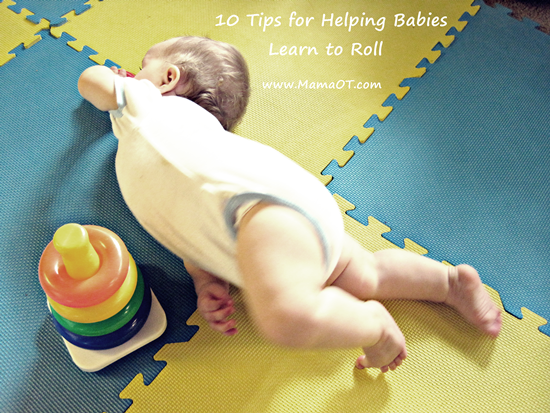
Non only is rolling the beginning step in developing postural control (of import for later development of fine motor skills such as handwriting), it is also important considering it engages a function of the encephalon responsible for making the left and right sides of the body "talk" to and coordinate with each other (important for reading, writing, and developing college motor skills). Cool, huh…or am I the only nerd in the room?
Some babies are ready to ringlet from the get-go, while others take their time. On average, babies tend to first roll from tummy to back betwixt 2-5 months, from back to side between 4-v.5 months, and from back to tummy between 5.5-7.5 months. Regardless of whether babies take the fast or slow road to rolling, their bodies begin preparing to roll wayyyyyy before they ever flip themselves over that very beginning fourth dimension. And, gauge what? You go to be a part of that training! This post contains affiliate links for your convenience (come across full disclosure here).
Here are 10 tips for helping babies learn how to gyre:
1. Ready downwards and pick upward infant while shifting his weight to the side in a rolling motion.You lot tin can kickoff this one every bit before long as baby is born and — guess what? — it's super easy to comprise into your daily routine. You can do this with every diaper alter and sleep session which means, for a newborn, it can add up to 20 or more times a mean solar day. That'south a lot of practice!
Here's how you lot do it: Sit babe on his lesser and roll him over to the side while setting him down. He volition automatically attempt to go on his head from falling out of line with his body (a reflex with which babies are born), strengthening the muscles on the sides of his neck. This movement also allows him to do pushing against the floor with the arm on the way downwards. Simply reverse this motion when information technology's time to pick baby upwards. Be sure to do rolling baby to both sides throughout the twenty-four hour period…we don't desire a baby who only moves to one side! Check out the photos below or watch a short video demonstrating this maneuver by clicking here.

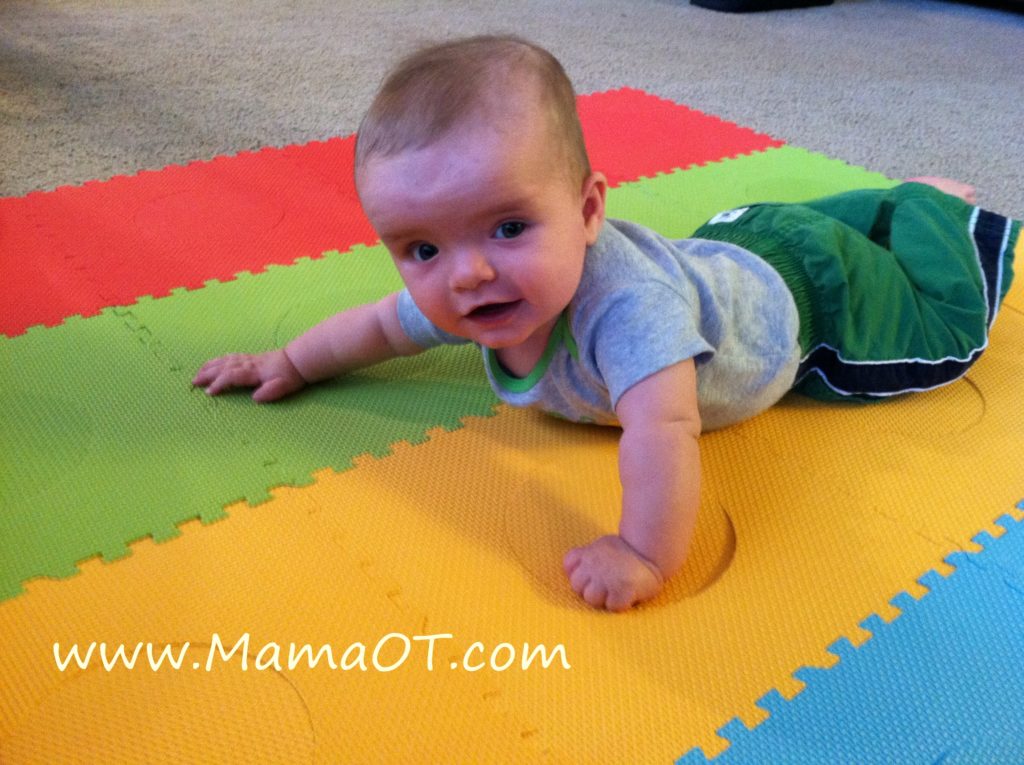
In one case your baby is comfy on his stomach and can push his chest off the floor, you lot may discover that he will offset to rock his body side to side. This means he'south on his mode to initiating his new skill of rolling! Information technology may be hours or weeks until he finally topples over for the first time, but the fact that he is practicing shifting his weight side to side is HUGE! For some babies who take problem learning how to roll, this weight shifting matter is fundamental.
Sometimes babies seem to become "stuck" in that pushed upwardly position and simply can't seem to figure out (or are uncomfortable with) shifting their weight side to side. Y'all can aid with this by guiding him in some slow, gentle side-to-side motions while he's pushed upwards equally y'all sing a song like Row, Row, Row Your Boat or The Wheels on the Jitneyand then help him shift his weight to the side just plenty that he is able to finish the scroll himself at the end of the song or poetry. You can also help your baby shift his weight side to side on an practice ball (learn more about that here) as he practices this skill in grooming for rolling. But exist sure to be super duper careful, motility slowly, keep your hands on his mid-department at all times, and keep him on top of the ball (not coming downwards the side of the ball) so it doesn't slip out from under you/him.
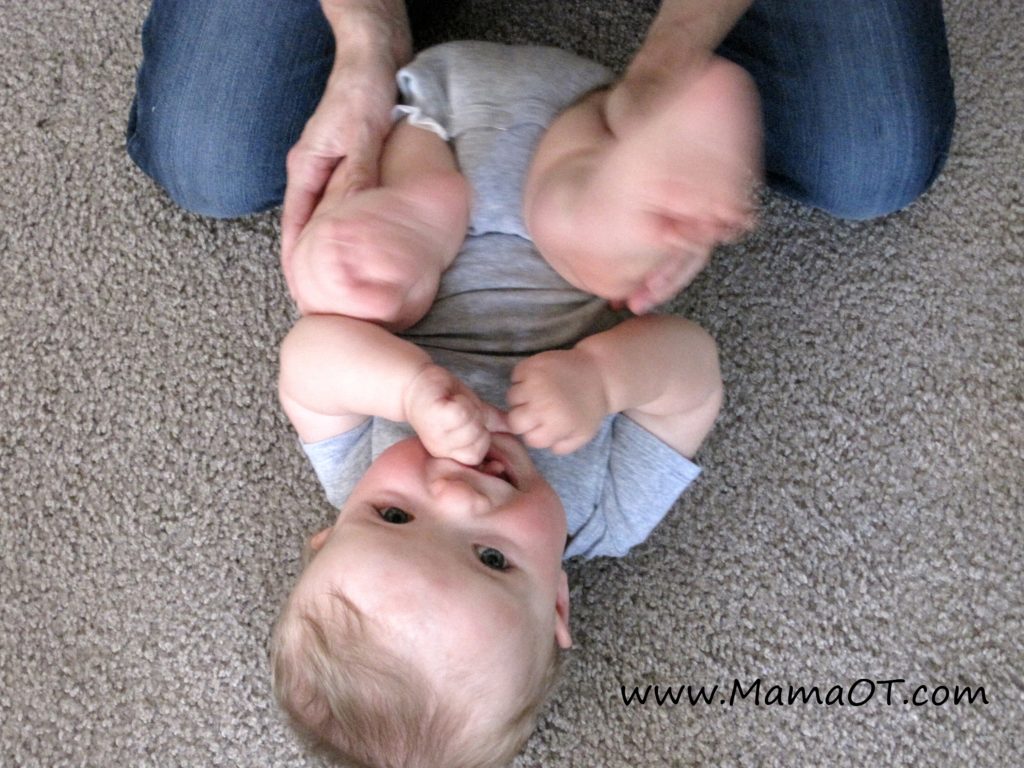
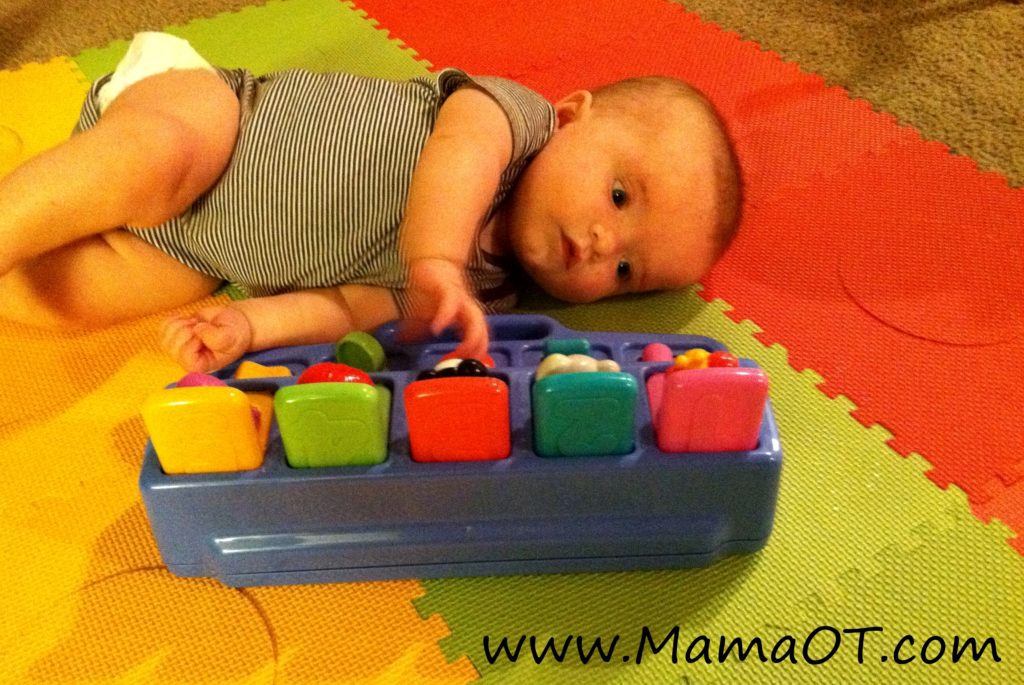
six. Allow baby to spend roughly equal amounts of time on all four sides of the torso: tummy, back, left side, correct side. This gives babe's body exposure to all positions involved in rolling as she strengthens her neck, trunk, and arms. It's likewise skilful for preventing the formation of apartment spots on the back of her head which, if you ask me, is incentive enough to mix things upwards throughout the twenty-four hour period. Attempt to vary infant's position about every 15-20 minutes.
seven. Encourage baby to play at (and cantankerous) his midline. Movement is performed in relation to the invisible line downward the centre of our bodies, and the ability to roll is dependent on a babe's ability to come to (and cantankerous) that midline. The bully affair is, our eye moves with united states of america wherever we go, so midline play can be washed lying on the back or the side. Babies generally develop the ability to play with their easily in midline between one-3.5 months (while on their dorsum), and are able to await with their caput in midline in this position between four-five months.
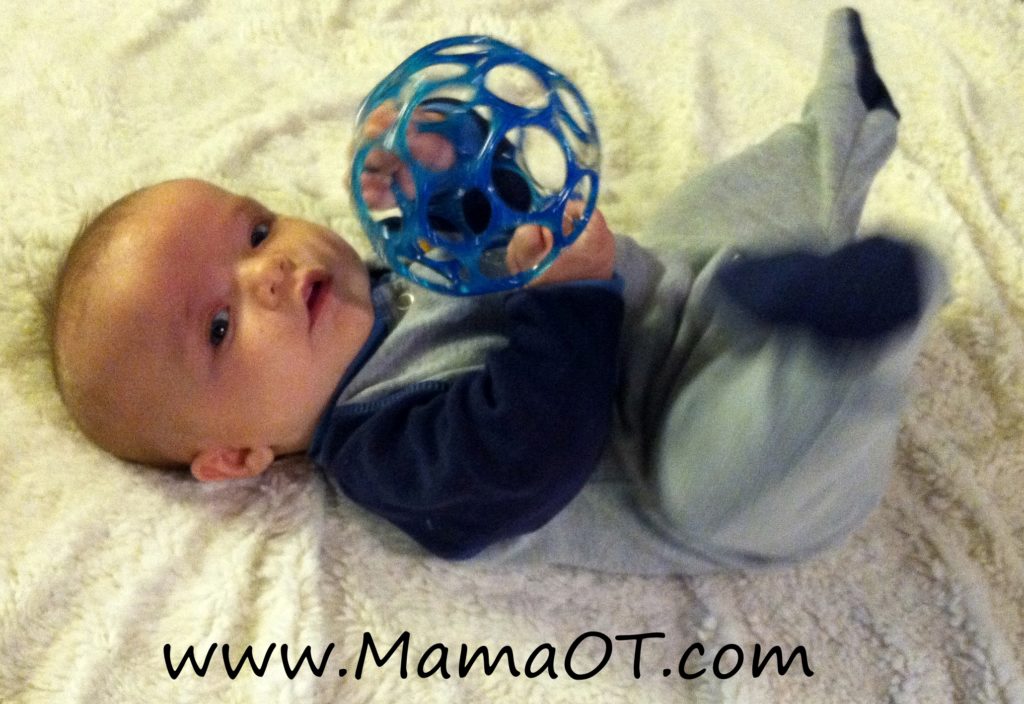
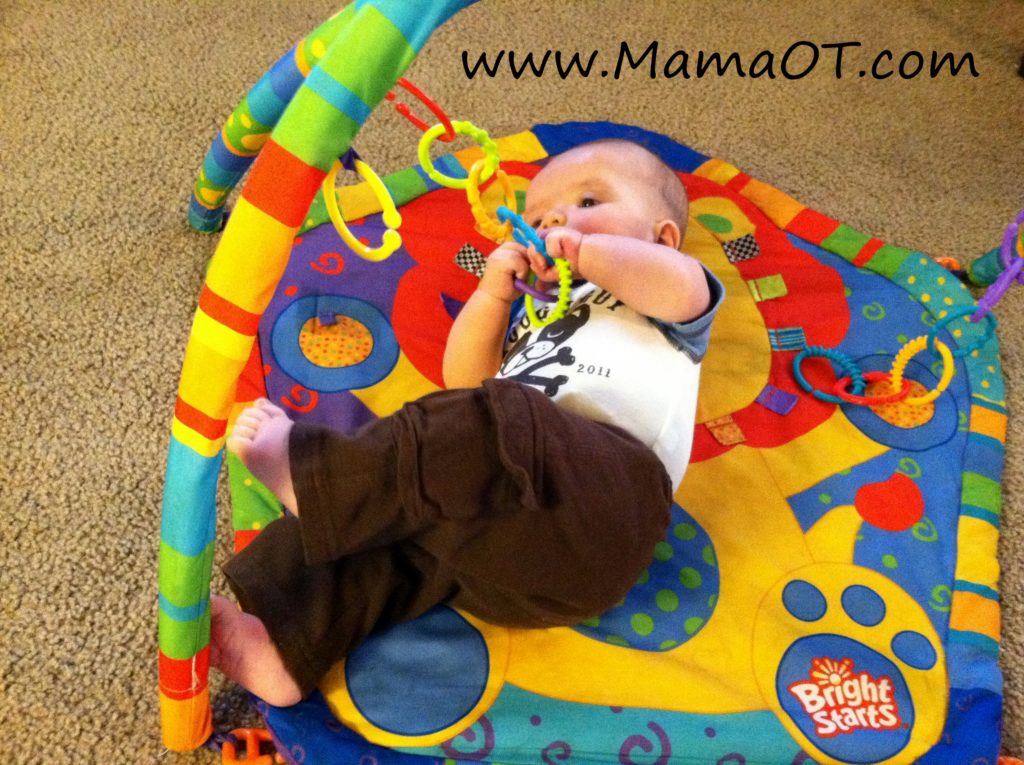
viii. Encourage baby to separate movements of upper and lower body. Newborn babies are wired to go on their body in i line, and then they'll practise a "log roll" if you effort to coil them over. The"segmental curl" typically develops between four-5 months, every bit they are able to twist and separate the movements of the upper and lower torso while initiating the gyre with their hips. Once infant is comfortable playing at midline in the rounded position mentioned earlier, yous can go alee and move her dorsum and forth through these twisting positions to the rhythm of your favorite children's vocal (Row, Row, Row Your Boat has won critical acclamation in our household). First with both legs moving together, then progress to helping infant take hold of one foot with the opposite hand. Intermission for a 2d after each twist in order to give baby'south body a chance to register the movement, then go along and allow the practiced times curlicue!
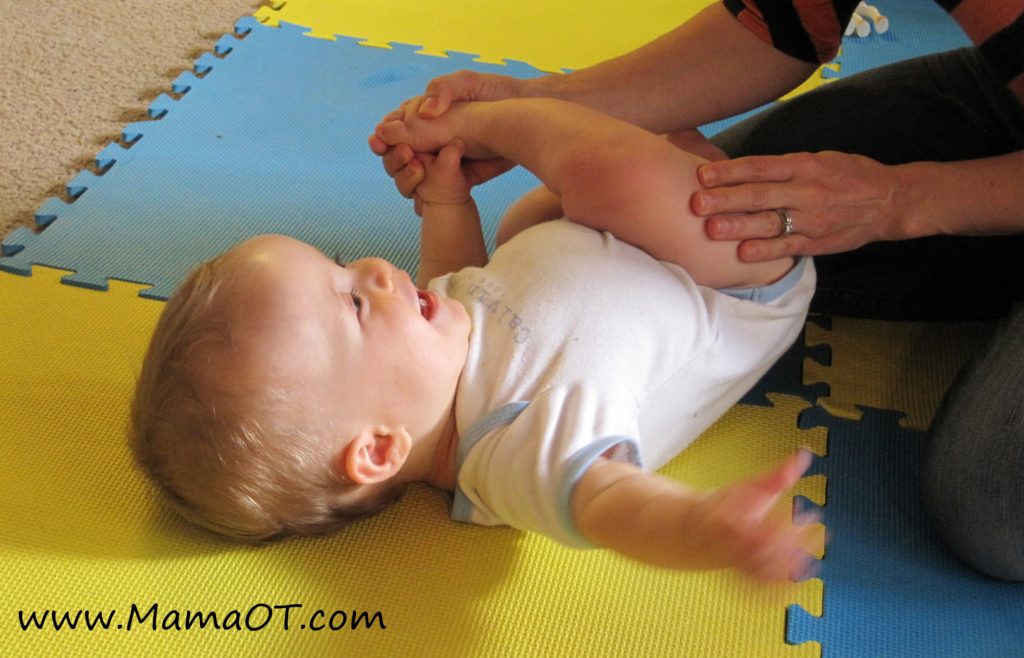
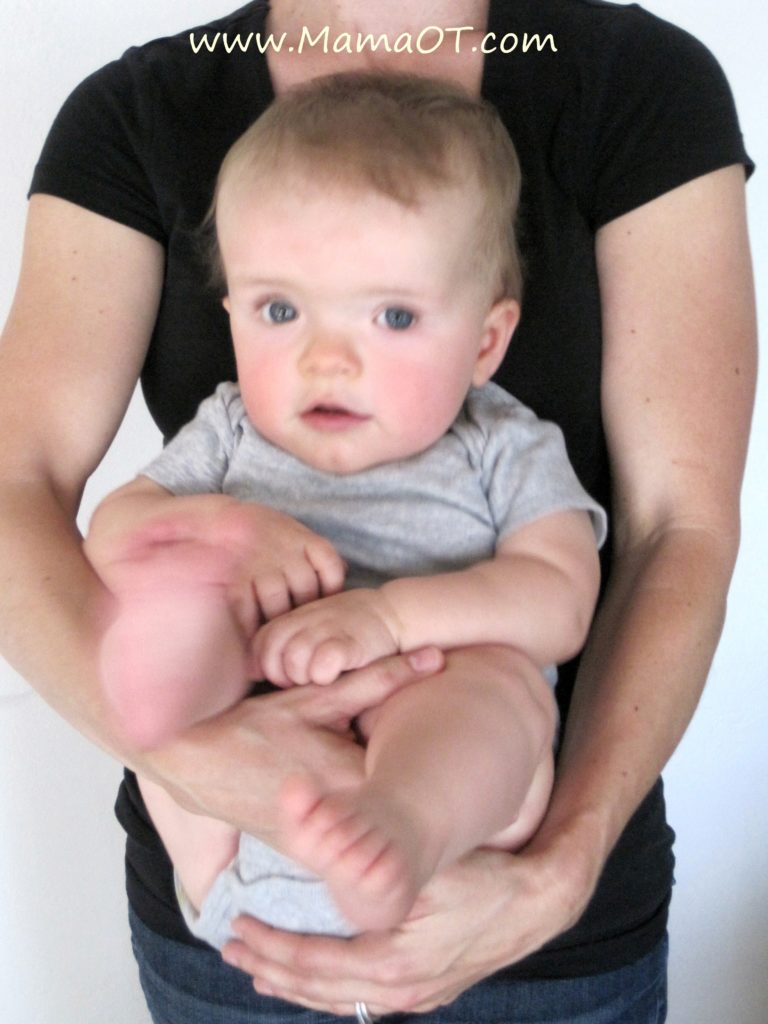

So there you have it! X ways to help babies learn how to gyre. Don't go overboard with this stuff. We're not training babies for the Infant Olympics! Start with the basics, have fun, and permit the babe exist your guide. Share this information with people you know who may find it useful…the more who know nearly it, the amend for our babies.
Desire even more tips related to rolling?
The wonderful Starfish Therapies has put together this brusk video and postal service about how to encourage your baby to coil from back to tummy, plus this general post about encouraging rolling, and another post called "My Child Isn't Rolling Over: Should I Be Concerned?"
And Pediatric OT Anne Zachry has a really helpful book called Retro Baby which is filled with tips and activities to help your baby develop skills such as rolling, sitting, and itch. You can read my review of Retro Baby by clicking hither, or you lot can just caput directly to Amazon to see it for yourself.
Alright, time to go rolling!
[convertkit grade=4884621]
chamberlindinto1985.blogspot.com
Source: http://mamaot.com/10-tips-for-helping-babies-learn-to-roll/